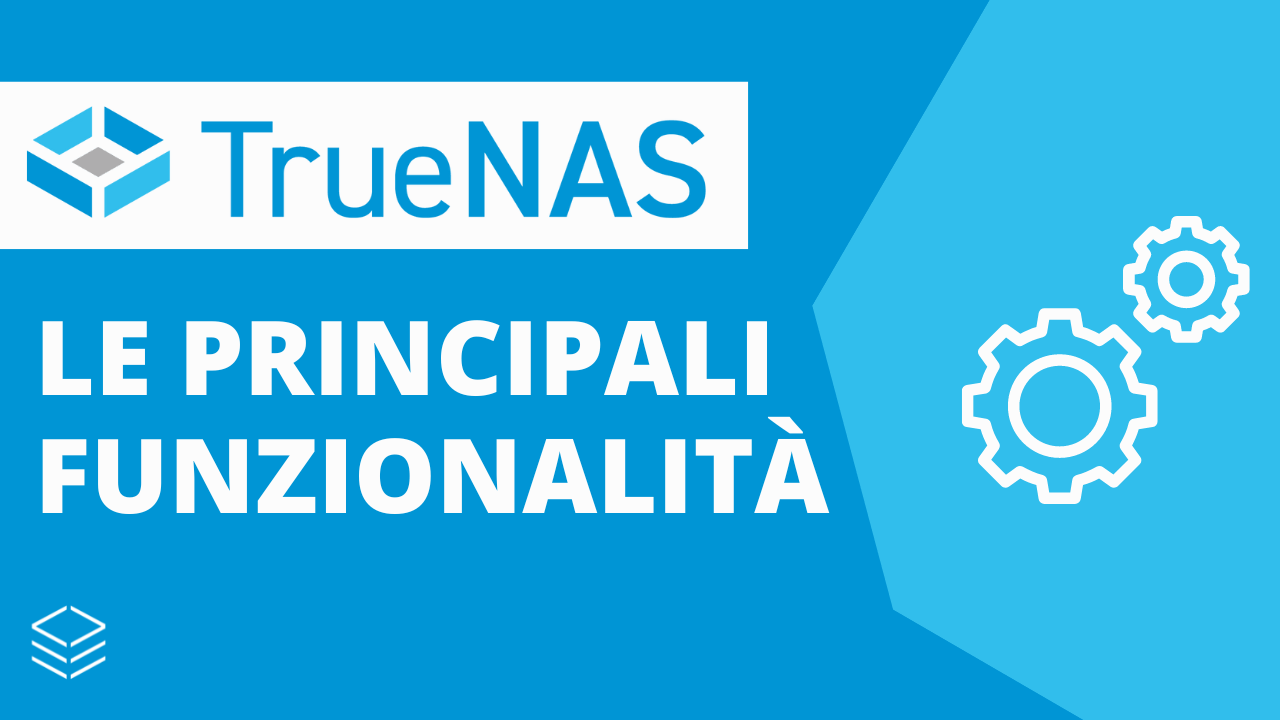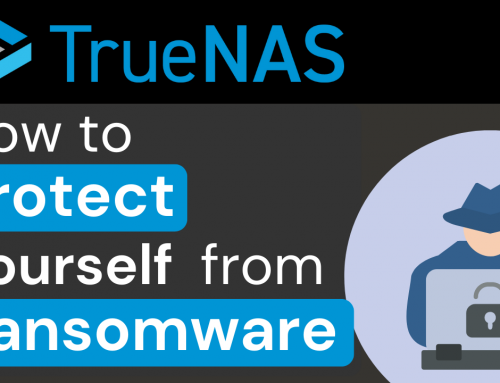The objective of this article is to explain the main features of the Organization TrueNAS.
TrueNAS is the enterprise-class operating system dedicated to the most famous, reliable and downloaded data storage in the world.
Based on FreeBSD it has now reached version 11.2, has more than 15 years of development and has been downloaded more than 7 million times, provides a host of interesting features.
Through the innovative and revolutionary ZFS File System it will be possible to protect, store, backup, organize and manage versions of the data. TrueNAS is used everywhere, for Home environments, small and medium sized companies.
But let’s see in detail what are the main features of this extraordinary product starting from a quick guide to hardware sizing:
For those wishing to explore the aspects of hardware sizing to get the most out of the TrueNAS operating system, here you will find our guide to sizing TrueNAS.
TrueNAS uses ZFS as a File System:
Over the past few years, TrueNAS has introduced (in the footsteps of FreeBSD from which it was derived) the use of the innovative ZFS FileSystem.
ZFS is in fact one of the most innovative and secure Filesystems in the world. With over seven million downloads, TrueNAS using ZFS, has introduced on more systems than any other product or project to date. Today it is used everywhere, from homes to businesses, acquiring stability and maturity never reached before by any File System Storage.
Its main features are:
- High flexibility and simplified management of raid volumes;
- Data integrity and reliability: elimination of the volume corruption problem;
- Elimination of hardware raid controllers.
Let’s see these features in detail:
Unparalleled flexibility.
ZFS simplifies storage planning because it combines the blocks (and therefore the space) of all the disks, allowing you to divide available space from the file system to your liking, thus making the space highly configurable.
ZFS includes the permissions and quotas of traditional file systems, but also includes compression levels (in completely transparent mode), capacity reservations and clonable snapshots.
Of these features, snapshots will probably be the ones that will forever change the way you think about storage.
Data integrity and elimination of RAID controllers.
Flexibility is useless without reliability. From its earliest versions, the ZFS development team has always been intransigent on data integrity and redundancy.
ZFS creates a chain of trust (ie a chain of trust) of the data, using a checksum algorithm when the data is written and always verifying by means of the checksum when they are read.
Likewise, the file system’s metadata checksum is performed, which allows you to periodically check all the checksums to determine if the data or backups are being corrupted. Through these features, ZFS will avoid the feared data and volume corruption problem.
Knowing that the data is intact is important but not enough. Another interesting feature is what allows you to eliminate the hardware RAID and allow the continuity of the service despite the disruptions of the disks.
ZFS can maintain data redundancy through a sophisticated system of multiple RAID configurations. These RAID configurations include mirroring (RAID 1) and mirror striping equivalent to the traditional RAID 10 configuration. There are also “RaidZ” configurations that tolerate the error of one, two or three disks of a given volume, ie the equivalent of RAID 5 and RAID 6.
Key features of TrueNAS: File sharing for Windows, MAC and Unix Linux
File sharing is what TrueNAS does best. All major operating systems are supported through protocols:
SMB / CIFS (Microsoft Windows file shares),
NFS (Unix file shares)
AFP (Apple File Shares)
as well as other protocols such as FTP, iSCSI (block sharing), WebDAV and other methods of sharing data on the network are available.
iSCSI also supports VMware VAAI, Proxmox, Microsoft ODX and Microsoft Windows Server 2008 and 2012 R2 Clustering.
TrueNAS can also function as a Domain controller up to Windows 2012 R2 Server, thus allowing the Windows PCs of the LAN to be domained.
Most operating systems, including Microsoft Windows, Mac OS X, many Linux distributions and PC-BSD ® can connect using SMB / CIFS shares with little or no additional configuration needed on the client side.
Most Unix operating systems support connection with NFS and free clients are widely available.
AFP is mainly used by Mac OSX and is suitable for a network environment that connects only with Macintosh clients. TrueNAS ® also supports Time Machine backups.
Simple and immediate web administration interface:
TrueNAS has a goal, to simplify the complex activities of the system administrator for the widest possible user base.
Every aspect of a TrueNAS system can be managed by a Web user interface. A wizard for the first configuration further simplifies the setup of TrueNAS. The creation of a volume, the setting of authorizations on individual shares or the execution of software updates can simply be performed from the graphical interface with a few clicks.
Obviously, the TrueNAS team knows that it is not possible to think of everything. Many services are available through advanced configuration in the Web interface available in the advanced menus. Advanced configuration is also possible via the SSH console.
Snapshots management integrated in the ZFS FileSystem
The snapshots is like a snapshot of the data at the very moment it is executed.
Thanks to ZFS, you can create and save snapshots of the entire filesystem at any time. As long as there is a snapshots, administrators can access the files as they were when it was created.
Snapshots can be created one-time or scheduled as cron jobs (or scheduled tasks) from the web interface. At any time, it will be possible to restore the entire file system to the most recent snapshots.
From the web interface, users will be able to see how much space a given snapshots take up on the volume and delete, clone or roll back to individual snapshots as needed.
Replies
ZFS snapshots can be used as local backups: they can also be used to create remote backups, being much more streamlined and smaller.
Replicating snapshots of the local filesystem on a remote ZFS file system will create a complete duplicate in a remote storage, allowing you to relocate the data.
In addition, additional snapshots of the same filesystem can be sent incrementally, reducing the size of each backup to changes made between snapshots only.
In case of catastrophic damage to a local ZFS file system, any backup snapshot can be sent to a new ZFS file system, recovering all data until the last backup.
Encryption on Storage volumes
The TrueNAS development team claims to be the first and only open source project to offer encryption on ZFS volumes.
An encryption option is available on the volume that can activate industry-standard AES-XTS encryption that can be accelerated by hardware (when the processor has AES-NI functionality).
Encrypted volumes can only be read by TrueNAS systems that have the master key for that volume. The user will be able to create a passphrase that will allow him to add extra protection to his system against loss or theft.
This feature will be greatly appreciated if our TrueNAS hardware contains “personal” or “sensitive” data. It will allow us to obtain compliances on the GDPR legislation.
Another reason to use cryptography is that it will allow the protection of confidentiality even during the discontinuation phase of the hard disks since the units will no longer have to be deleted as they are already encrypted.
Virtualization
In 11.X versione of TrueNAS it is possible to virtualize operating systems such as Linux and Microsoft Windows.
Backup and software services
TrueNAS is compatible with the following software/services:
- Rsync
- Apple Time Machine
- TrueOS Life Preserver
- Windows Backup
Additional plugins
TrueNAS supporta le funzionalità principali di un moderno dispositivo NAS in modo “out of the box”.
Tuttavia, ad alcuni utenti potrebbe interessare la possibilità di installare dei plugin software di terze parti sul proprio TrueNAS.
Per assicurarti che i plugin installati non siano dannosi per il sistema, TrueNAS utilizza jail di FreeBSD e il sistema PBI di PC-BSD. Il sistema isola i plugins di terze parti dal sistema operativo principale, ma consente di accedere alle directory e alla configurazione.
Main TrueNAS Plugins:
- Bacula: Network backup solution (server)
- BackupPC BackupPC is a high-performance, enterprise-grade system for backup Linux, Windows ad Mac
- owncloud Owncloud is a system for the creation and management of personal cloud resources
- ClamAV ClamAV® is an open source antivirus engine for detecting virus, trojan, ecc…
- Many others…


